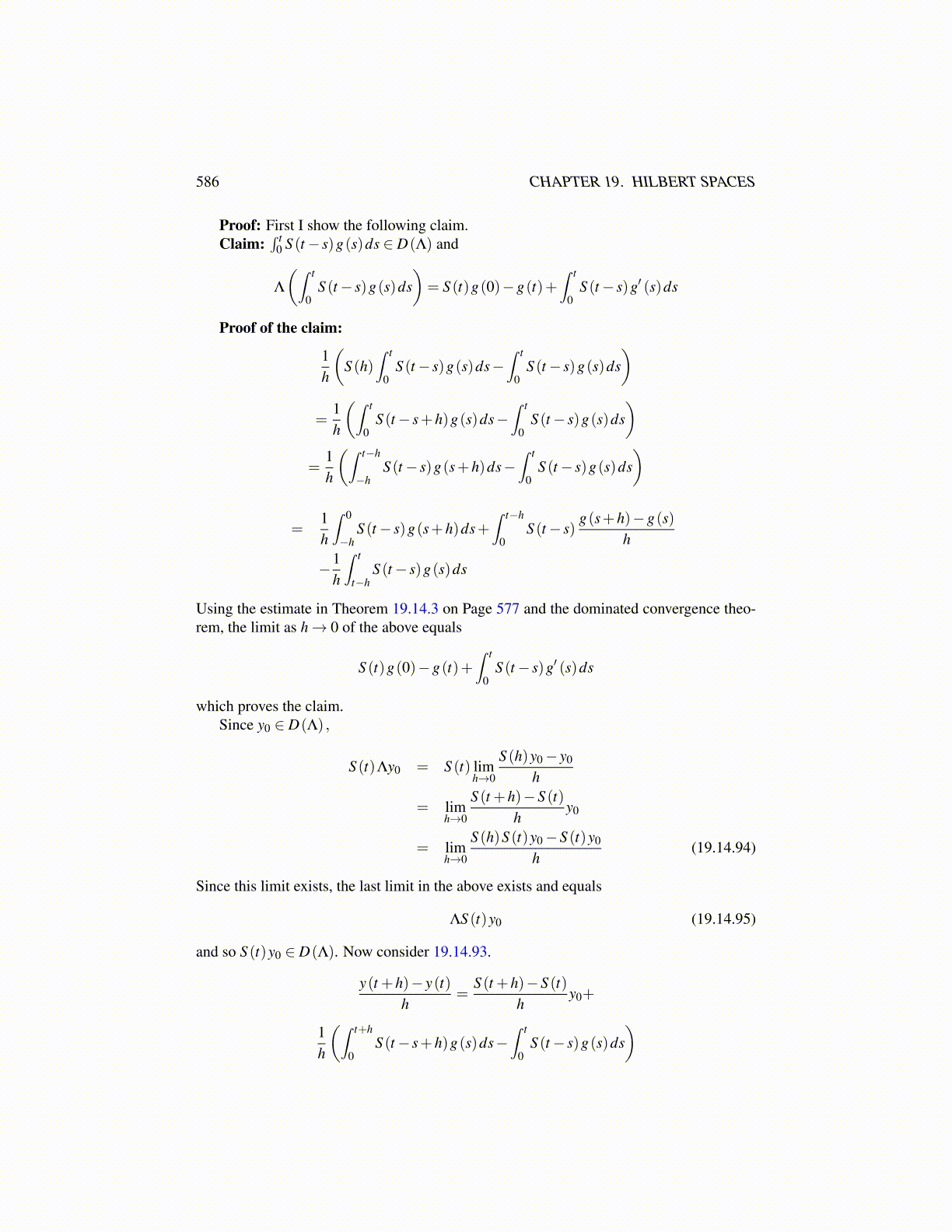
586 CHAPTER 19. HILBERT SPACES
Proof: First I show the following claim.Claim:
∫ t0 S (t− s)g(s)ds ∈ D(Λ) and
Λ
(∫ t
0S (t− s)g(s)ds
)= S (t)g(0)−g(t)+
∫ t
0S (t− s)g′ (s)ds
Proof of the claim:
1h
(S (h)
∫ t
0S (t− s)g(s)ds−
∫ t
0S (t− s)g(s)ds
)
=1h
(∫ t
0S (t− s+h)g(s)ds−
∫ t
0S (t− s)g(s)ds
)=
1h
(∫ t−h
−hS (t− s)g(s+h)ds−
∫ t
0S (t− s)g(s)ds
)
=1h
∫ 0
−hS (t− s)g(s+h)ds+
∫ t−h
0S (t− s)
g(s+h)−g(s)h
−1h
∫ t
t−hS (t− s)g(s)ds
Using the estimate in Theorem 19.14.3 on Page 577 and the dominated convergence theo-rem, the limit as h→ 0 of the above equals
S (t)g(0)−g(t)+∫ t
0S (t− s)g′ (s)ds
which proves the claim.Since y0 ∈ D(Λ) ,
S (t)Λy0 = S (t) limh→0
S (h)y0− y0
h
= limh→0
S (t +h)−S (t)h
y0
= limh→0
S (h)S (t)y0−S (t)y0
h(19.14.94)
Since this limit exists, the last limit in the above exists and equals
ΛS (t)y0 (19.14.95)
and so S (t)y0 ∈ D(Λ). Now consider 19.14.93.
y(t +h)− y(t)h
=S (t +h)−S (t)
hy0+
1h
(∫ t+h
0S (t− s+h)g(s)ds−
∫ t
0S (t− s)g(s)ds
)